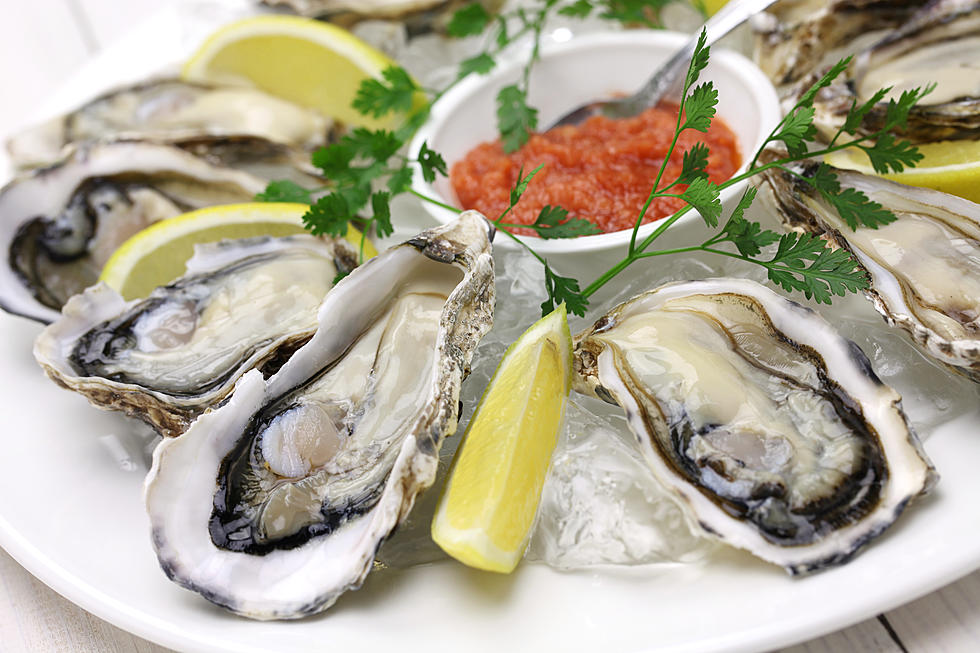
How you can benefit NJ waters by eating oysters
🌊 Recycled oyster shells are used in major NJ coastline restoration projects
🌊 The shells provide habitat for fish, stabilize shorelines, and reduce erosion
🌊 Restaurants save shells for the American Littoral Society's projects
New Jersey’s waters used to be full of oysters, clams, and other shellfish which provided a great economy and a tasty meal, but also provided an important ecological value to estuaries.
Oysters provide the structure that other fish live in, and they filter the water which keeps the water clean, said Tim Dillingham, executive director of the American Littoral Society.
Over the last 200 years, much of the natural oyster population and presence has disappeared. Dillingham said in Barnegat Bay, there used to be 12,000 acres of oysters, most of which has disappeared.
What is the project?
“In our mission to care for our coast in New Jersey, we started a program to recycle oysters and put them back in the bays from which they came originally,” Dillingham said.
The project of collecting and recycling oyster shells started in 2015 with the help of restaurants in Monmouth and Ocean counties that set aside the shells of oysters, mussels, and clams that they sell. Then, volunteers and staff from the American Littoral Society, called “oyster wranglers” come and pick them up.
The shells are brought out to Sandy Hook where they cure or sit in the sun for a year so Mother Nature and sunshine can remove organic material and bacteria from the shells, before being put back into the waters for restoration projects, Dillingham said.
Forked River Beach Restoration Project
Last month, the shells were moved from the Sandy Hook curing site to Forked River Beach in Barnegat Bay for the Society’s living shoreline restoration project.
The disappearance of oysters and the reefs they built hit home in the Forked River Beach community as erosion reached a point where the bay was overflowing into some homes during high tides. The site has lost more than 150 feet of shoreline since 1995, with erosion really kicking into high gear after Superstorm Sandy in 2012.
“We were combining both our efforts to try and improve the water quality to put oysters back in the water with the need to help protect the community that was suffering from erosion, increased wave damage,” Dillingham said.
So, the Society built a series of barriers which are functionally oyster reefs. They are in 168 segments which are large, wire boxes filled with rock. Then the faces are filled with oysters. Dillingham said in that process, about 60 cubic units of the recycled oyster shells (equal to two dump truck loads) that came from the “Shuck It, Don’t Chuck It” program with the restaurants, Dillingham explained. An additional six truckloads of shells were donated by Albert Marine, as well.
“Our goal and our hope is that we’ll have really nice functional oyster reefs which are helping to protect the community at Forked River Beach, are helping to reduce water quality problems which are providing habitat to the fish that live in Barnegat Bay,” Dillingham said.
On top of the Forked River Beach Living Shoreline Restoration Project, the Society has added 32 million live oysters into that shell mix.
Those oysters will set on the recycled shell, grow together, and grow out, and hopefully over a period of time will create a natural oyster reef on top of the rock cores that the Society provided within the baskets, Dillingham said.
The Forked River project is complete. The shells and reefs are in place, and Dillingham said they have to leave it to Mother Nature to grow out the oysters. The Society will be monitoring the situation to see if they have to get back involved again.
What other projects are on the horizon?
There is a project waiting to be finalized around Seaside Park. According to Dillingham, the Society wants to use the recycled oyster shell approach to help protect a beach and a causeway, which is a critical road used as a coastal evacuation route.
All projects are reviewed heavily by the New Jersey Department of Environmental Protection, and the federal government to make sure there are no environmental impacts from the projects themselves, he said.
Similar projects have been done in the past and continue to happen on the Delaware Bay Shore. There, the goal is to protect and keep the beaches intact so they can be used by horseshoe crabs and migratory shorebirds.
The shell recycling program has expanded to include community drop-off sites in Rumson and Point Pleasant Beach. Since the start, more than 32 tons of shells have been collected.
Meantime, shells continue to be collected by nearly 20 restaurants in Monmouth and Ocean counties for future projects so they can be put back in the water to help protect communities.
Recycling oysters back into the environment has become a way of life, Dillingham said.
Report a correction 👈 | 👉 Contact our newsroom
Windfarm projects proposed for NJ coast — and what they might look like
Gallery Credit: New Jersey 101.5
More From New Jersey 101.5 FM









